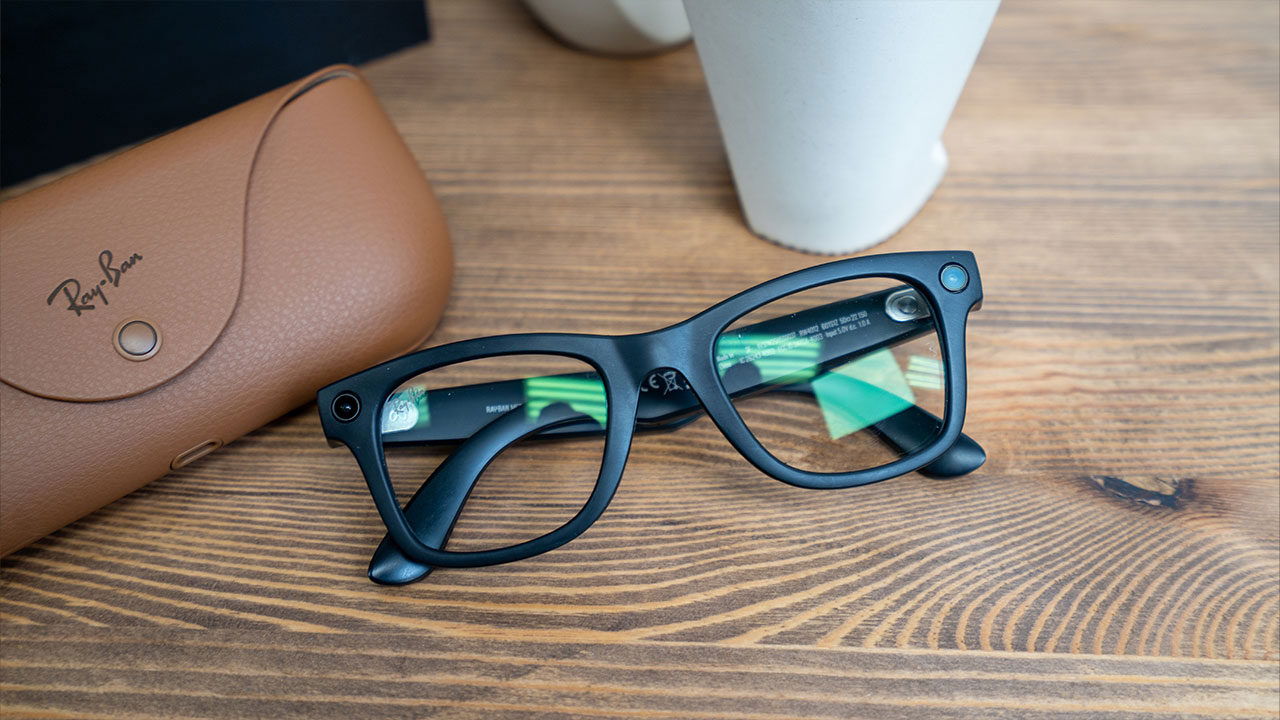When Meta first partnered with Ray-Ban to create smart glasses in 2021, I wasn’t sure who they were for. It sounded like a cool idea, but one that would get old quickly and not be something people would wear every day. Fast forward to today, and the second generation of these glasses shows how much can change when a company focuses on refining what works rather than reinventing the wheel. Despite some hiccups, I can see how these glasses could be very useful.
Unboxing and setting up the Ray-Ban Meta glasses, you quickly see how unassuming they look. They’ve been designed from the ground up to look like regular Ray-Bans, which is the whole point — and what makes them something people can actually wear every day without feeling out of place. Available in Wayfarer, Headliner and Skyler styles, with prices starting at $379 USD, these glasses blend into your wardrobe instead of standing out as tech accessories. The design carries over almost unchanged from the first generation, and that’s actually a good thing. The frames come in multiple colours and lens options, including Transitions (the ones I was given for review) and polarized varieties that raise the price to $459 or more.
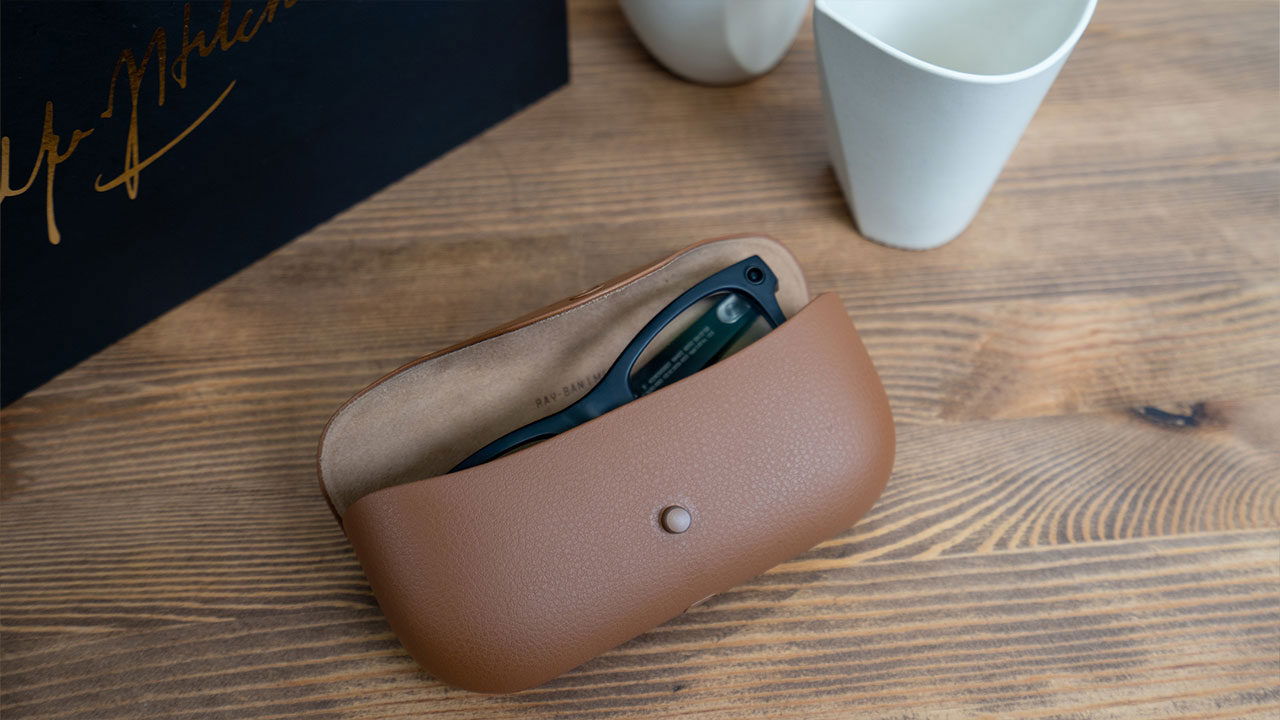
When smart glasses first hit the market, with Google Glass among a few other options, they very much felt like technology on your face. You looked more like a character out of Star Trek than a casual person walking outside or sitting in a coffee shop, and that was the biggest problem. While the tech might have been useful, standing out while you go about your life isn’t ideal — and that’s the last thing people want when they’re trying to be social. That’s where Meta got things right: it partnered with a glasses company and delivered something that feels natural, something that blends into everyday life.
Jumping back to the second-generation Ray-Ban Meta glasses, while they look very similar to their first-generation counterparts, the biggest differences are under the hood. Battery life jumps from a measly few hours to a legitimate eight hours of mixed use. That might not sound revolutionary, but it changes how you actually use the glasses.
Instead of worrying about them dying halfway through a run or during a long day out, you can wear them from morning coffee to evening walks without reaching for the charging case. My real-world testing shows the glasses last closer to five or six hours with heavy use, but that still beats the original model by a comfortable margin. And as long as you have the case handy, they’re easy to top up.
Beyond the battery, the Ray-Ban Meta glasses also see the camera get an upgrade, now shooting video at 3K resolution instead of 1080p. Photos remain at 12 megapixels, producing solid images in good lighting but still struggling a bit in dim conditions. The video quality bump matters more to content creators than to casual users, especially since most clips are compressed on social media anyway.
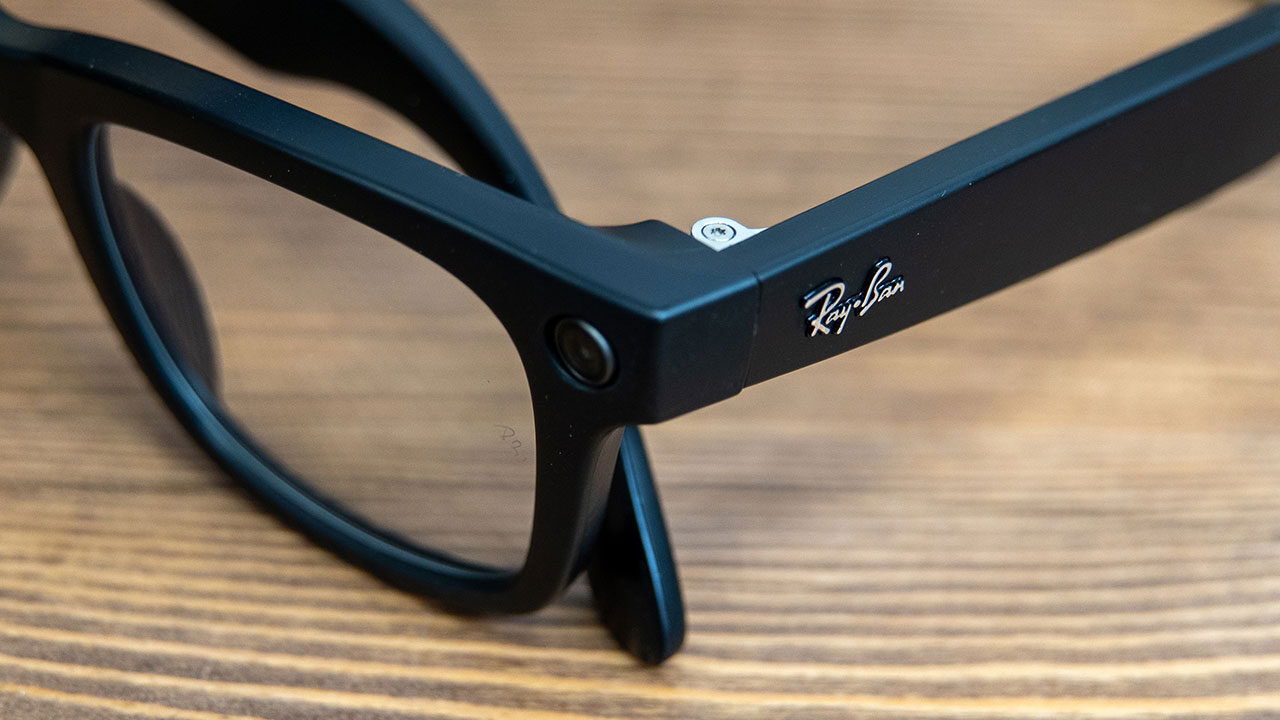
What really impresses is the image stabilization at 1080p, which delivers surprisingly smooth footage even while running or moving quickly. Would I suggest the Ray-Ban Meta glasses as your main tool for content creation? Of course not. But with these updates, they capture much better video, making any content you create with them more usable across a range of platforms.
Even with everything packed into the Ray-Ban Meta glasses, using them feels relatively intuitive once you get past the learning curve. A button on the right temple handles photos and videos, while a touch panel on the side controls volume and playback. The open-ear speakers deliver better audio than you’d expect from something sitting on your face. Music comes through clearly with decent bass, and the five-microphone array picks up voices well during calls. The sound does leak at higher volumes, though, so these aren’t ideal for quiet offices or libraries.
“Beyond the battery, the Ray-Ban Meta glasses also see the camera get an upgrade…”
I’ve seen firsthand how the glasses can be a bit loud compared with earbuds. While using them at Lucca Comics & Games for transcription (more on that later), the person next to me told me they could hear most of what the glasses were saying. I would have loved to see bone-conduction audio as a solution to limit sound leakage, but considering how good the audio quality is, Meta has managed to make them appealing without needing something in your ears — and that’s saying something.

Meta AI integration brings the most interesting updates since launch. The translation feature works well for real conversations, letting you follow along in languages you don’t speak. Point the glasses at signs or menus in another language, and Meta AI can translate them on the spot. The system supports English, French, German, Italian, Portuguese and Spanish, though that’s still far behind what Google offers.
Live AI also lets you ask questions about what you’re looking at, identifying objects, plants or landmarks with mixed results. I actually found it very useful while walking around Italy. I was able to pick up parts of conversations and understand what people were saying when I walked into shops, but there were plenty of issues I hope Meta addresses.
First and foremost, when translating, Meta AI still speaks your native language back to you. That means if you’re in a group and only one person is speaking Italian, for example, you’ll hear Meta repeat the English to you along with the translated Italian. It can be overwhelming and confusing. I’d love to see an option for it to only speak the translation — even as a toggle in the settings — which would make the experience much smoother.
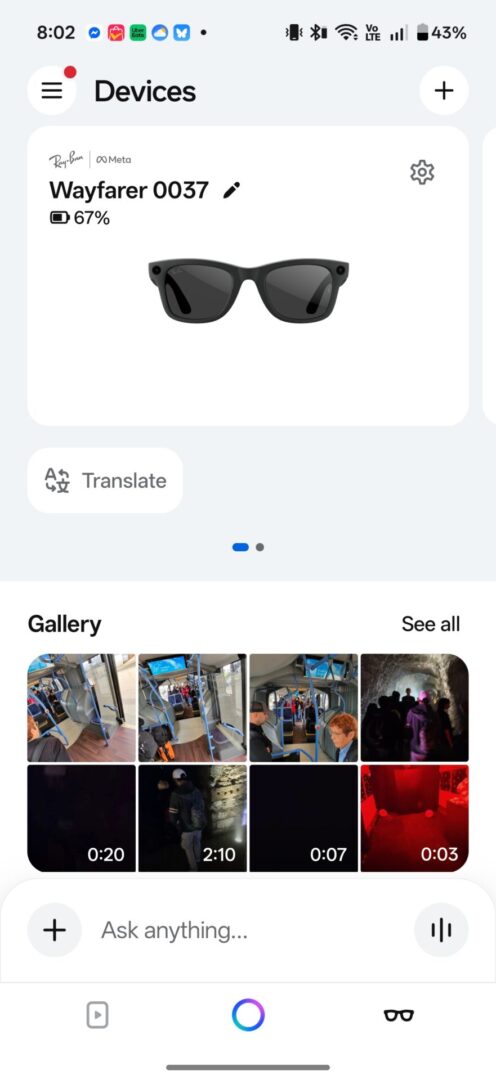


I’d also like to see more languages added. Thankfully, Italian was available, but sitting in meetings with Japanese developers, having that language supported would have been helpful. Yes, these are very much journalist problems, but I can easily imagine similar frustrations for anyone exploring a city abroad. Still, even with its delays, this feature is genuinely useful, and one I could see myself using often if Meta can work out the kinks.
Moving over to Meta’s AI assistant, we see another area that’s great in concept but held back by a few rough edges. It can call the wrong contact or misunderstand text messages when everything runs through voice commands. Asking it to do anything complex often triggers the familiar, “I can’t help with that, but I’m learning more every day,” response.
Meta promises improvements, including a conversation focus mode that amplifies the voice of whoever you’re talking to while reducing background noise. New camera modes like hyperlapse and slow motion are also on the way, along with integrations with apps such as Strava and Garmin for workout tracking. These are all welcome additions, and from the looks of it, Meta is putting real effort into turning these glasses into a fully realized product.



The glasses work through the Meta AI app, which requires linking everything to a Meta account via Facebook, Instagram or email. The app handles pairing, settings and transferring your photos and videos to your phone. It’s straightforward but does pull you deeper into Meta’s ecosystem, whether you want that or not.
The Ray-Ban Meta glasses deliver a much fuller experience when tied more closely to Meta’s ecosystem and are relatively limited otherwise. Many features, such as messaging, sending photos or posting to social media, are connected to Meta’s apps. It’s unfortunate, since I can imagine these glasses being useful across multiple platforms, but I understand why they’re limited the way they are.
Thankfully, the audio features make the glasses fantastic for listening to music or having directions read out while you walk with friends. They let you stay focused on the world around you, getting important information when you need it, without being distracting. They also work better than earbuds in transparency mode and serve as a great option when you’re active and worried about earbuds falling out. There’s still room for improvement in some design choices, but most issues are minor and don’t affect the overall experience of using the glasses.
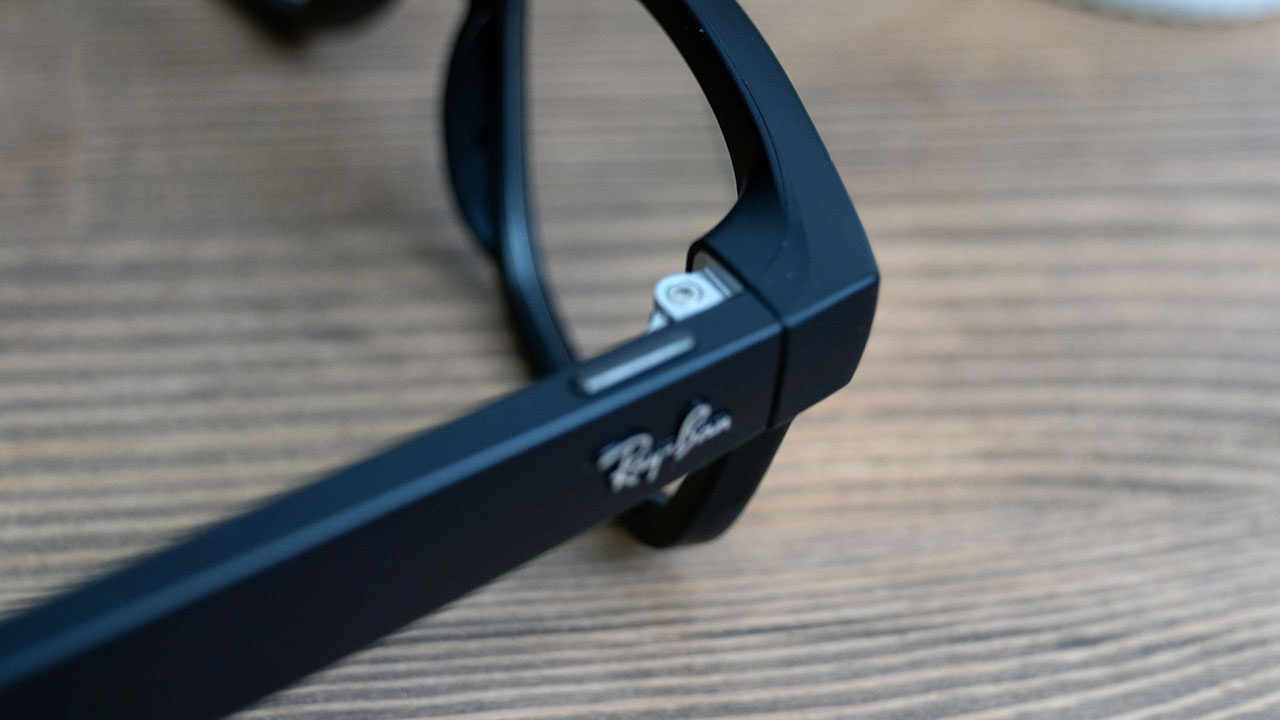
I will say, as someone who wears glasses and often opts for contacts, it’s been a bit of an adjustment wearing glasses (even without a prescription) for this review. It also highlighted some of the design issues I hope to see improved in future versions. I found the frames put pressure on my nose bridge and ears after several hours, especially when I sized down for a snugger fit, which became uncomfortable.
They weigh about 48 grams — only slightly more than regular Ray-Bans — but that extra weight from the battery and electronics becomes noticeable during all-day wear, especially if you are forcing yourself to wear them for longer periods of time. I also found they tend to slide down my nose a bit, especially while walking. It’s not much, but just enough that I’d love to see rubber nose pads added in future iterations to help with that minor issue.
The charging case looks great and adds 48 hours of battery life to the glasses, giving you plenty of longevity while out and about. It is a bit bulky, though. I love what Meta is doing with the Meta Vision AI glasses case — it folds up when not in use — but for what these offer, that’s a minor gripe.

There’s a lot to like about the second generation of the Ray-Ban Meta glasses, which offer meaningful refinements to an already solid concept. But with the first generation now selling for a starting price of $299, choosing which pair to buy becomes a bit tougher. The older glasses will receive many of the same software updates as the new ones, including conversation focus and third-party app integrations.
If you already own the first generation, upgrading probably doesn’t make much sense unless battery life is a major concern. But for anyone buying their first pair, the second generation’s improvements justify the extra cost — especially if you want to live your life focused on doing, not on a battery meter.
At the end of the day, I’m impressed with the Ray-Ban Meta glasses. They proved to be something I reached for far more than I expected. They succeed because they don’t try to be everything at once, but instead focus on doing a few things — and doing them mostly well. There are more feature-packed devices and plenty of complex headsets, but when I’m walking around on vacation or heading down the street to grab a coffee, the last thing I want is complexity. I want something that works and stays out of the way when I don’t need it — and thankfully, the Ray-Ban Meta glasses second generation do both of those things, and do them well.
